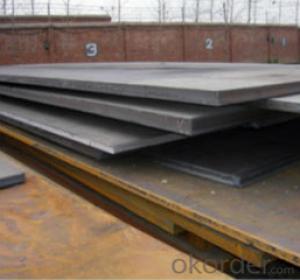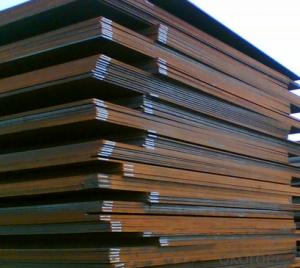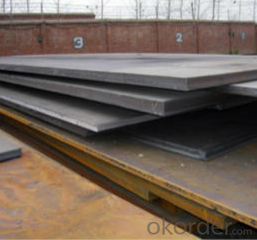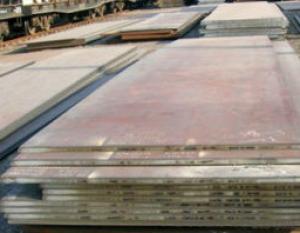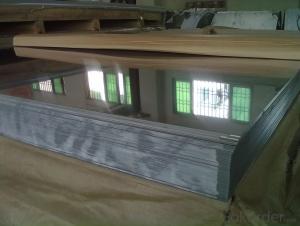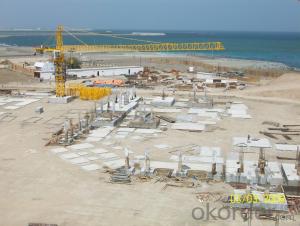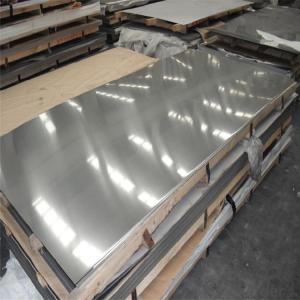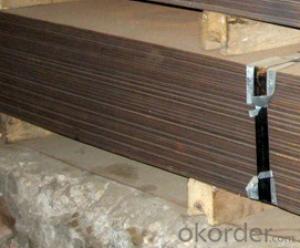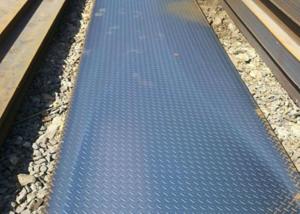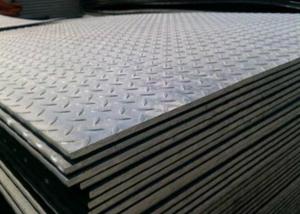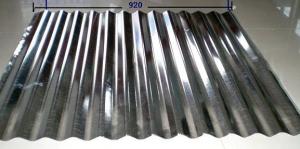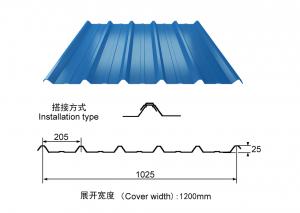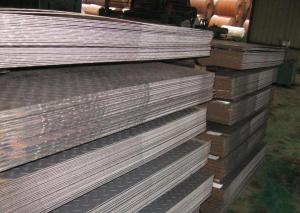316l Stainless Steel Sheet Price CNBM
- Loading Port:
- Qingdao
- Payment Terms:
- TT OR LC
- Min Order Qty:
- 10 pc
- Supply Capability:
- 30 pc/month
OKorder Service Pledge
OKorder Financial Service
You Might Also Like
Quick Details
| Grade: | 300 Series | Standard: | JIS, AISI, ASTM, GB, Other | Length: | 2000-6000mm |
| Thickness: | 0.3-80mm | Width: | 1000-2000mm | Place of Origin: | Zhejiang, China (Mainland) |
| Brand Name: | huaye | Model Number: | 316 | Type: | Plate |
| Application: | Foodstuff, Gas, metallurgy, biology, electron, chemical, petroleum, | Certification: | SGS |
Packaging & Delivery
| Packaging Details: | Standard export sea-worthy packing in wooden pallet. |
| Delivery Detail: | Normally 15-20 days |
Specifications
1)Surface: NO. 1, 2B, BA, NO. 3, NO. 4, HL, NO. 8 and so on.
2)Tickness: 0.3 to 4.0mm
3)Width: 31 to 1524mm
Specifications
1)Surface: NO. 1, 2B, BA, NO. 3, NO. 4, HL, NO. 8 and so on.
2)Tickness: 0.3 to 4.0mm
3)Width: 31 to 1524mm
4)Use: Decoation, industry etc.
About Products
1. We are a great agents of Chinese famous mills Baosteel, Tisco, Jisco, for S. S. Products, and some international famous mills POSCO, OUTOKUMPU.
2. Special dimension are acceptable.
3. Cutting & Slitting services are available.
4. Swift Lead time (usually about 20 days for ex-stock and processing).
5. Mill Inspection Certificate and Origin can be provided.
6. All material mentioned are in prime grades.
7. Coil weight: 05 to 20 tons(mainly).
8. We can supply materials with various surfaces(NO. 1, 2B, BA, NO. 3, NO. 4, HL, NO. 8)
Service Concept
The first customers become lifelong customers.
Others:
If you want to purchase some products to test the market, we can lower the MOQ
Delivery: Normally 15-20 days
Productivity: 5000-6000 tons/month
Packing: Standard export sea-worthy packing in wooden pallet.
- Q: Can steel sheets be used for transportation applications?
- Transportation applications can indeed make use of steel sheets. Steel has gained immense popularity in the automotive and aerospace sectors owing to its exceptional strength, durability, and resistance to corrosion. Chassis, body panels, doors, and structural parts in various transportation components are often constructed using steel sheets. These sheets offer remarkable structural integrity and can endure substantial loads, making them ideal for vehicles and aircraft. Moreover, steel sheets can be effortlessly shaped, welded, and machined, enabling customization and efficient manufacturing procedures.
- Q: Can steel sheets be used for roofing?
- Yes, steel sheets can be used for roofing. Steel is a durable and strong material that offers excellent protection against weather elements and is often used as a roofing material in residential and commercial buildings.
- Q: What is the maximum thickness of steel sheets?
- The maximum thickness of steel sheets can vary depending on various factors such as the type of steel, manufacturing process, and application. However, in general, steel sheets can range in thickness from a few millimeters to several centimeters.
- Q: How do steel sheets perform in fatigue resistance?
- Steel sheets have excellent fatigue resistance due to their high strength and toughness properties. The inherent characteristics of steel, such as its ability to withstand repeated loading, make it highly resistant to fatigue failure. Steel sheets are commonly used in various applications that require durability and prolonged performance under cyclic loading conditions.
- Q: What is the maximum width of steel sheets available?
- The maximum width of steel sheets available may vary depending on the supplier and the specific type of steel. However, it is common to find steel sheets with a maximum width of around 72 inches or 6 feet.
- Q: Can steel sheets be used for radiation shielding?
- Indeed, radiation shielding can be achieved with steel sheets. Due to its high density and capability to absorb and disperse radiation, steel is frequently employed as a radiation shielding material. The shield's thickness plays a pivotal role in safeguarding against radiation. Thicker steel sheets prove more efficacious in obstructing radiation due to their greater absorption potential. The application of steel sheets spans across diverse domains, including nuclear power plants, medical facilities, industrial radiography, and the construction of protective barriers in radiation-intensive regions.
- Q: Are the steel sheets suitable for HVAC applications?
- Indeed, HVAC applications find steel sheets to be highly suitable. Steel, being a robust and enduring material, possesses the ability to endure elevated temperatures and mechanical strain, thereby making it an ideal choice for incorporation in heating, ventilation, and air conditioning systems. Commonly, steel sheets are utilized in the construction of various HVAC components like ducts, plenums, and air handling units. They provide exceptional resistance against corrosion, which is of utmost importance in order to preserve the quality and durability of HVAC systems. Moreover, steel sheets can be effortlessly molded and joined through welding, allowing for customization and efficient installation. In summary, the utilization of steel sheets in HVAC applications guarantees dependable performance and longevity of the entire system.
- Q: What is the difference between a hot rolled and pickled steel sheet?
- A hot rolled steel sheet is made by rolling a heated slab of steel through a series of large rollers, resulting in a thick and rough surface finish. On the other hand, a pickled steel sheet undergoes an additional process called pickling, where the surface of the hot rolled steel is treated with an acid solution to remove impurities and create a smooth and clean surface finish. So, the main difference between the two is the surface finish - hot rolled steel has a rougher surface, while pickled steel has a smoother and cleaner surface.
- Q: What are the different sheet metal welding techniques for steel sheets?
- There are several sheet metal welding techniques commonly used for steel sheets, including spot welding, seam welding, and TIG welding. Spot welding involves joining two metal sheets by applying pressure and heat at specific points, creating a strong bond. Seam welding, on the other hand, involves continuously welding along the length of a joint, creating a continuous welded seam. TIG welding, also known as tungsten inert gas welding, uses a non-consumable tungsten electrode to create an arc that melts the metal, forming a weld pool that fuses the steel sheets together. Each technique has its own advantages and is chosen based on the specific requirements of the project.
- Q: Is the pattern steel plate hot-dip galvanized steel?
- A steel plate with a raised (or dented) surface on a surface (patterned, section). Pattern steel plate, also known as checkered steel plate, is its surface with diamond or protruding steel plate. The pattern can be a single diamond, a lentil shape or a round bean shape, or two or more than two patterns can be properly combined to form a composite pattern board. Pattern mainly from anti-skid and decorative effect. The comprehensive effects of antiskid, bending resistance, metal saving and appearance of the combined pattern board are obviously better than that of the single pattern board. Checkered steel plates are widely used in shipbuilding, boilers, automobiles, tractors, railway cars and construction industries.
Send your message to us
316l Stainless Steel Sheet Price CNBM
- Loading Port:
- Qingdao
- Payment Terms:
- TT OR LC
- Min Order Qty:
- 10 pc
- Supply Capability:
- 30 pc/month
OKorder Service Pledge
OKorder Financial Service
Similar products
Hot products
Hot Searches
Related keywords
